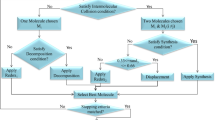Abstract
This paper describes, from a general system-design perspective, an artificial neural network (ANN) approach to a stock selection strategy. The paper suggests a concept of neural gates which are similar to the processing elements in ANN, but generalized into handling various types of information such as fuzzy logic, probabilistic and Boolean information together. Forecasting of stock market returns, assessing of country risk and rating of stocks based on fuzzy rules, probabilistic and Boolean data can be done using the proposed neural gates. Fuzzy logic is known to be useful for decision-making where there is a great deal of uncertainty as well as vague phenomena, but lacks the learning capability; on the other hand, neural networks are useful in constructing an adaptive system which can learn from historical data, but are not able to process ambiguous rules and probabilistic data sets. This paper describes how these problems can be solved using the proposed neural gates.
Similar content being viewed by others

References
Cohen, M. and Hudson, D. (1990), ‘An expert system based on neural network techniques’, Proceedings of the North America Fuzzy Information Processing Society, NAFIPS'90, Toronto, June.
Kamijo, K.I. and Tanigawa, T. (1990), ‘Stock price pattern recognition: a recurrent neural network approach’, ICNN-90, Vol. 1, pp. 215–221.
Kimoto, T. and Asakawa, K. (1990), ‘Stock market prediction system with modular neural network’, ICNN-90, Vol. 1, pp. 1–6.
Romaniuk, S. and Hall. L, (1989), ‘Parallel connectionist expert systems’, Proceedings of the International Symposium on Expert Systems, Theory and Applications, Zurich, Switzerland, June.
Rummerhart, D. and McClelland, J. (eds.) (1986), ‘Parallel Distributed Processing: Exploration in the Microstructure of Cognition’, Vol. I, MIT Press, Cambridge.
Tanaka, H. et al. (1976), ‘A formulation of fuzzy decision problems and its application to an investment problem, Kybernetes, 5, 25–30.
Tang, J. and Espinal, C. (1989), ‘A model to assess country risk, OMEGA Int. J. of Management Sci. 17 (4) 363–367.
Teh, H.H., Hsu, L.S. and Tsang, W.W. (1987), ‘Modelling knowledge information systems using inference networks, ARS Combinatoria 23A, 269–290.
Teh, H.H., Chan, S.C., Hsu, L.S. and Loe, K.F. (1989), ‘Probabilistic neural-logic networks’, Proceedings of the Inter Faculty Seminar on Neuronet Computing, pp. 76–93.
Turksen, I.B. and Guo, L. (1990), ‘A fuzzy-inference system with a neural network’, Proceedings of the North America Fuzzy Information Processing Society, NAFIPS'90, Toronto, June.
Wang Pei-zhuang, (1988), ‘Random sets in fuzzy set theory’, Systems & Control Encyclopedia, Madan G. Singh (Ed.) Pergamon Press, pp. 3945–3947.
Wang Pei-zhuang, Liu, X., and Sanchez, E. (1986), ‘Set-valued statistics and its applications to earthquake engineering’, Fuzzy Sets and Systems, 18, 347–356.
Wolfe, P. (1959), ‘The simplex method for quadratic programming’, Econometrica, 27, 382–398.
Wong, F. (1990), ‘Neural forecaster-a neural network for business and industrial forecasting’, Proc. of Intl. Conf. on Information Tech (ICIT'90), Kuala Lampur, Malaysia, Sept.
Author information
Authors and Affiliations
Rights and permissions
About this article
Cite this article
Wong, F.S., Wang, P.Z. & Teh, H.H. A stock selection strategy using fuzzy neural networks. Computer Science in Economics and Management 4, 77–89 (1991). https://doi.org/10.1007/BF00436283
Received:
Issue Date:
DOI: https://doi.org/10.1007/BF00436283



